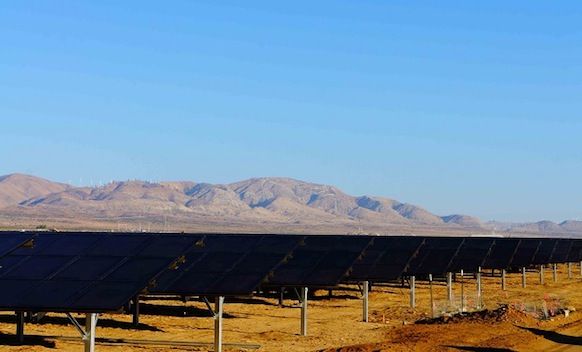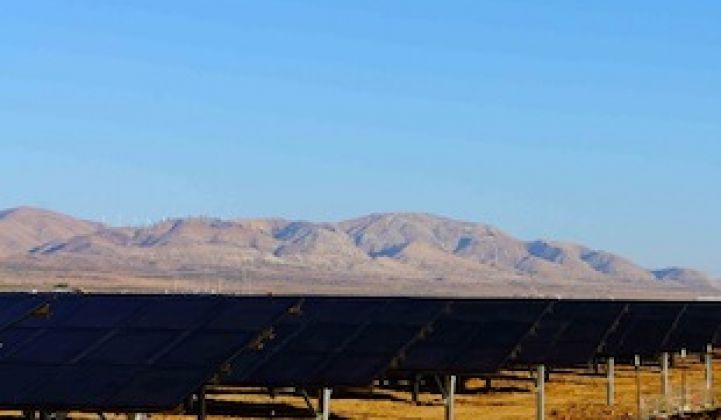There’s more big solar on-line in California -- 110 megawatts on 900 acres of privately owned scrub in Kern County, about 20 miles northwest of solar-crazy Lancaster.
A first stage of the Catalina Solar project, built by Bechtel for EDF Renewable Energy, actually began cranking out its first electrons late last year. Now all 1.1 million thin-film panels, a combination of Solar Frontier and First Solar product, are in place. EDF, citing Bloomberg New Energy Finance as its source, said Catalina Solar is the eighth-largest photovoltaic plant in the world.
The company used the occasion of the plant beginning full commercial operation to plug federal and state policies that incentivize clean power.
“Projects like Catalina Solar underscore the meaningful role that stable policy at the national and state levels -- specifically the federal Investment Tax Credit and the California Renewable Portfolio Standard -- can play in enhancing our nation’s long-term energy security,” Ryan Pfaff, executive vice president of EDF Renewable Energy, said in a statement.
The federal government uses a carrot to get renewable energy built, kicking back 30 percent of the cost of projects through the investment tax credit. California uses a stick: its renewable portfolio standard requires investor-owned utilities to source one-third of their electricity from renewables by 2020. In this case, the energy is going to San Diego Gas & Electric under a 25-year power purchase agreement.
According to documents filed with the Federal Energy Regulatory Commission, in the period from June 1 to July 1, the not-quite-complete Catalina Solar project sold 20,616,035.49 kilowatt-hours of power to SDG&E at a total cost of $2,276,751.62. That works out to 11 cents per kilowatt-hour. The standard summer residential rate [PDF] for San Diego customers ranges from 14.7 cents/kWh for baseline usage then quickly rises to 17 cents for up to 130 percent of baseline usage and 27 cents for between 130 percent and 200 percent of baseline usage.
One last note: The transmission lines that connect Catalina Solar to the grid do double duty with EDF’s nearby Pacific Wind power plant. Since solar produces during the day and the wind tends to blow at night, this helps the company get more out of the investment in transmission.

***
Editor's note: This article is reposted in its original form from EarthTechling. Author credit goes to Pete Danko.



